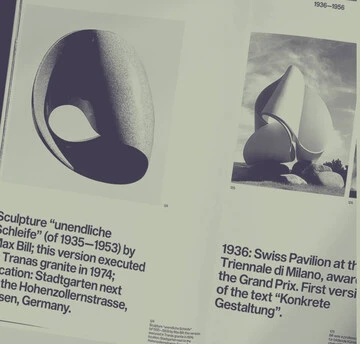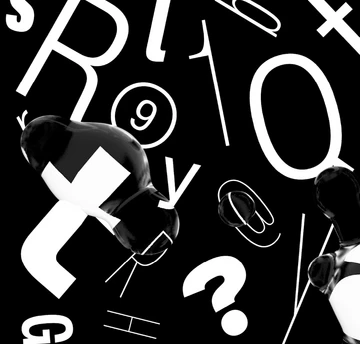Type Around the World – Get to Know Concepción, Chile
Spotlights

Spotlights
Type Around the World – Get to Know Concepción, Chile
In this recurring feature in our “Fonts Having a Moment” series, we’ll be exploring cities around the world through the dual lenses of culture and typography, guided by our friends at Monotype and some of our partner foundries. We hope you’ll join us on this exciting journey!
This week, get to know Concepción, Chile with Latinotype’s Luciano Vergara.
Portrait of Luciano Vergara.
1. Tell us a bit about yourself and your foundry.
At Latinotype, what ties us together is our outsider perspective — we all came from the province and the countryside. This made us observers of the world.
Latinotype was born from the need to show and market our typefaces globally. We are a company that represents designers and promotes teamwork. We have always believed that more eyes and hands on a typeface can help make it better.
Luciano Vergara at work.
Chile is an up-and-coming market for font design and marketing. We came together as Latinotype with the goal of helping designers who want to dedicate themselves to this professionally.
2. Tell us about your city. What do you love about it? What’s distinctive about it?
The city sign for Concepción in Parque Ecuador.
Concepción is a post-industrial city that once had earthenware and textile factories, steel, an oil refinery, and the wood and paper industry.
Now, among other things, it is a university city with about 30% of the population made up of students from outside the city. During university breaks, Concepción becomes very calm. The general attitude of the city can feel very easy-going.
Galeria Adauy, one of the many covered market halls where pedestrians sometimes take shelter from the rain.
Despite being the second most metropolitan city in Chile, Concepción is geographically small, which lets us accomplish a variety of things in one day. You can visit the beach or mountain range within an hour.
3. What’s a typeface that you think represents the spirit of your city and why?
Gothic typefaces are part of the city’s identity. In Chile, from Concepción and southward, you can feel the influence of German culture.
Fuente Alemana, a small local “soda shop” restaurant chain that has sold sandwiches, hot dogs, ice cream, and beer since the 1970s.
Further south, there’s Valdivia, known as the beer capital and home to a vibrant German community. Many other businesses use Gothic typefaces, including Fuente Alemana, a classic “soda shop” (for bites and drinks on draught), as well as places like the Kunstmann Brewery in Valdivia or the Banco de Chile.
Banco de Chile, illuminated at night for the Teletón, a national telethon held annually since 1978 to benefit rehabilitation centers helping children with developmental disabilities.
Concepción is a bohemian and nocturnal city where neon lights play a star role, and I hope this tradition doesn’t disappear.
Neon lights seen at a bus terminal.
However, like in many cities, Helvetica has a strong presence. For example, one of the popular weekend routes around the University of Concepción has signage with Helvetica, which pairs beautifully with the modern architecture of the campus.
The campus at Universidad de Concepción.
4. Where would you take someone visiting your city for the first time to explore its creative heart? (Art, music, food, neighborhoods.)
The bars in Concepción are a lot of fun! They usually offer craft beer and live rock music. The city itself is known as the birthplace of Chilean rock and Plaza Perú is packed with bars.
The sign for Bar Callejón, which uses the Sofia typeface, designed by Latinotype’s Daniel Hernández.
For example, Bar Callejón, which uses one of our typefaces, Sofia, designed by my colleague Daniel Hernández. There are also pubs like Casa de Salud, a classic spot where you can find drinks, local art, and live music.
Inside Bar Callejón.
In March, the REC Festival takes place. It’s the most famous free music festival in southern Chile. This event has enhanced the city’s identity and boosted tourism driven by music and rock.
Images submitted by Luciano Vergara.





















